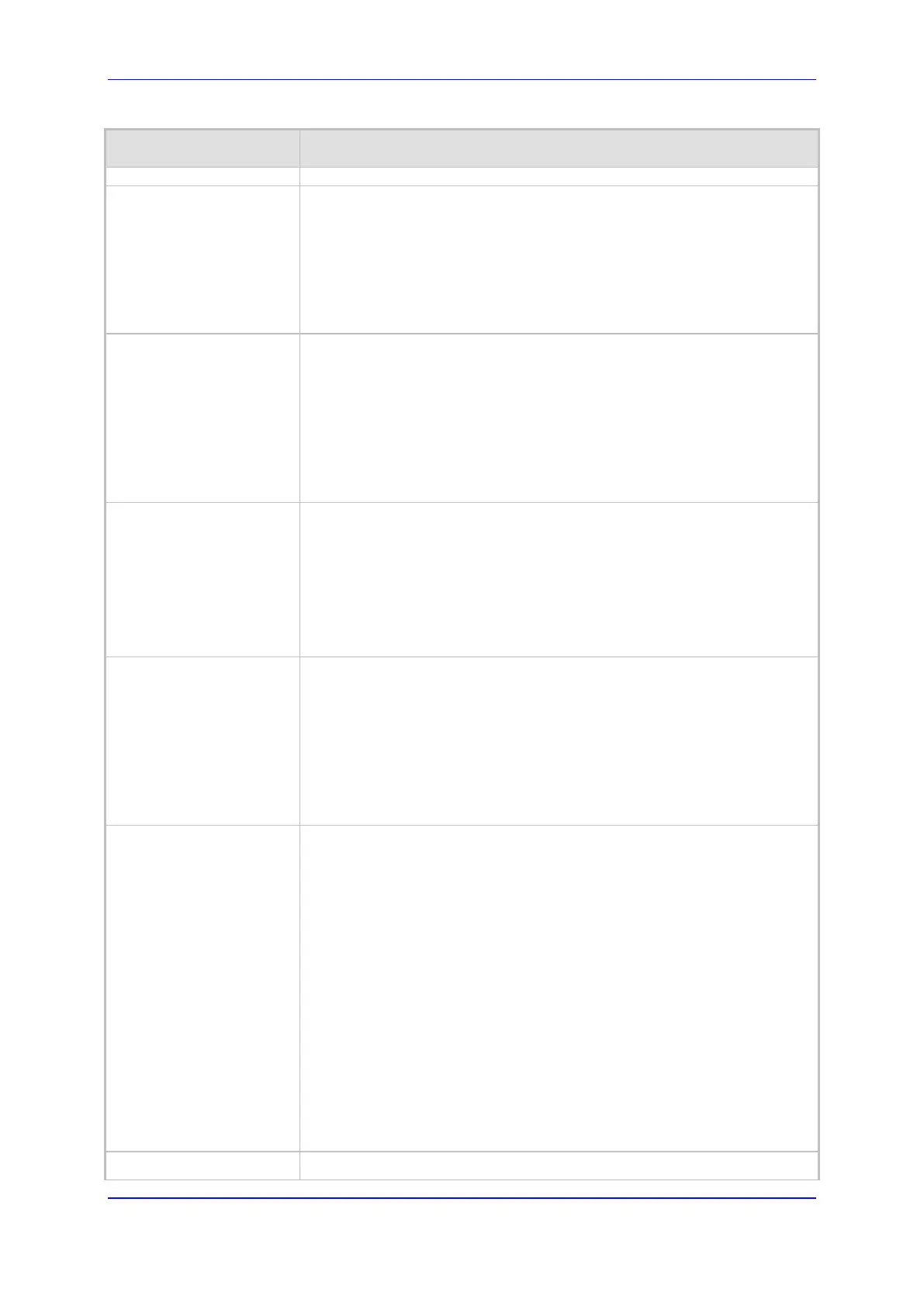Version 6.8 601 Mediant 2600 E-SBC
User's Manual 43. Configuration Parameters Reference
Parameter Description
'IP=192.168.13.1' is the device's IP address
[EnableRekeyAfter181]
Enables the device to send a re-INVITE with a new (different) SRTP key
(in the SDP) if a SIP 181 response is received ("call is being forwarded").
The re-INVITE is sent immediately upon receipt of the 200 OK (when the
call is answered).
[0] = Disable (default)
[1] = Enable
Note: This parameter is applicable only if SRTP is used.
[NumberOfActiveDialog
s]
Defines the maximum number of concurrent, outgoing SIP REGISTER
dialogs. This parameter is used to control the registration rate.
The valid range is 1 to 20. The default is 20.
Notes:
Once a 200 OK is received in response to a REGISTER message, the
REGISTER message is not considered in this maximum count limit.
This parameter applies only to outgoing REGISTER messages (i.e.,
incoming is unlimited).
Web: Enable RFC 4117
Transcoding
CLI: rfc4117-trnsc-enbl
[EnableRFC4117Transco
ding]
Enables transcoding of calls according to RFC 4117.
[0] Disable (default)
[1] Enable
Notes:
For this parameter to take effect, a device reset is required.
For more information on transcoding, see Transcoding using Third-
Party Call Control.
Network Node ID
net-node-id
[NetworkNodeId]
Defines the Network Node Identifier of the device for Avaya UCID.
The valid value range is1 to 0x7FFF. The default is 0.
Notes:
To use this feature, you must set the parameter to any value other
than 0.
To enable the generation by the device of the Avaya UCID value and
adding it to the outgoing INVITE sent to the IP Group (Avaya entity),
use the IP Group table's parameter 'UUI Format'.
Web: Enable Microsoft
Extension
CLI: microsoft-ext
[EnableMicrosoftExt]
Enables the modification of the called and calling number for numbers
received with Microsoft's proprietary "ext=xxx" parameter in the SIP
INVITE URI user part. Microsoft Office Communications Server
sometimes uses this proprietary parameter to indicate the extension
number of the called or calling party.
[0] Disable (default)
[1] Enable
For example, if a calling party makes a call to telephone number
622125519100 Ext. 104, the device receives the SIP INVITE (from
Microsoft's application) with the URI user part as INVITE
sip:622125519100;ext=104@10.1.1.10 (or INVITE
tel:622125519100;ext=104). If the parameter EnableMicrosofExt is
enabled, the device modifies the called number by adding an "e" as the
prefix, removing the "ext=" parameter, and adding the extension number
as the suffix (e.g., e622125519100104). Once modified, the device can
then manipulate the number further, using the Number Manipulation
tables to leave only the last 3 digits (for example) for sending to a PBX.
EMS: Use SIP URI For Defines the URI format in the SIP Diversion header.

